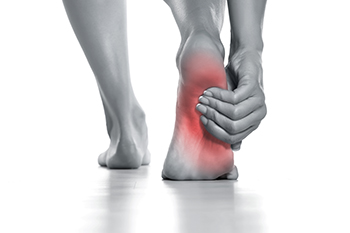Connect With Us
Blog

The shoes we wear influence how we walk, balance, and move through daily life. In early years, flexible shoes that allow natural movement can help support developing feet. As we age, footwear with proper arch support, cushioning, and stability becomes more important. Poor shoe choices can contribute to joint strain, foot deformities, or falls, especially in older adults. Over time, unsupportive or ill-fitting shoes may alter gait patterns and affect posture, leading to discomfort in the knees, hips, or back. Choosing the right footwear can help preserve comfort and movement ability from childhood into later years. It is not only about style or fit, it is about supporting long-term mobility. If you are experiencing discomfort or noticing changes in how you walk, it is suggested that you schedule an appointment with a podiatrist for a diagnosis and appropriate treatment.
Getting the right shoe size is an important part of proper foot health. Seek the assistance of Dr. Thong V. Truong from California. Our doctor will provide the care you need to keep you pain-free and on your feet.
Getting the Right Shoe Size
There are many people who wear shoes that are the incorrect size, negatively affecting their feet and posture. Selecting the right shoes is not a difficult process, so long as you keep several things in mind when it comes to choosing the right pair.
- When visiting the shoe store, use the tools available to measure your foot.
- Be sure there is ‘wiggle room’. There should be about an inch between your toes and the tip of your shoes.
- Do not always assume you are the same size, as manufacturers run differently.
- Purchase shoes later in the day, as your feet swell as the day progresses.
- If a shoe is not comfortable, it is not suitable. Most shoes can’t be ‘broken in’, and comfort should be the ultimate goal when it comes to choosing the right pair of shoes
As our feet hold our body weight and keep us moving, it is important to treat them right. Picking the right pair of shoes can provide your feet comfort and mobility without pain.
If you have any questions, please feel free to contact our office located in Chico, CA . We offer the newest diagnostic and treatment technologies for all your foot care needs.

Heel pain is a common issue that can affect people of all ages. It often develops from overuse, wearing poor footwear, or pressure on the heel, over time. One frequent cause is plantar fasciitis, or irritation of the tissue that supports the arch, which can create sharp pain with the first steps in the morning or after resting. Other possible sources include inflammation of the heel pad, nerve involvement, or structural issues such as high or low arches. Rest, stretching, and supportive shoes may ease discomfort in many cases. However, if the pain persists, worsens, or begins to interfere with walking, it should not be ignored. Left untreated, heel pain can become more difficult to manage. If you are experiencing ongoing discomfort in your heel, it is suggested that you see a podiatrist for a diagnosis and a care plan designed to restore comfort and function.
Many people suffer from bouts of heel pain. For more information, contact Dr. Thong V. Truong of California. Our doctor can provide the care you need to keep you pain-free and on your feet.
Causes of Heel Pain
Heel pain is often associated with plantar fasciitis. The plantar fascia is a band of tissues that extends along the bottom of the foot. A rip or tear in this ligament can cause inflammation of the tissue.
Achilles tendonitis is another cause of heel pain. Inflammation of the Achilles tendon will cause pain from fractures and muscle tearing. Lack of flexibility is also another symptom.
Heel spurs are another cause of pain. When the tissues of the plantar fascia undergo a great deal of stress, it can lead to ligament separation from the heel bone, causing heel spurs.
Why Might Heel Pain Occur?
- Wearing ill-fitting shoes
- Wearing non-supportive shoes
- Weight change
- Excessive running
Treatments
Heel pain should be treated as soon as possible for immediate results. Keeping your feet in a stress-free environment will help. If you suffer from Achilles tendonitis or plantar fasciitis, applying ice will reduce the swelling. Stretching before an exercise like running will help the muscles. Using all these tips will help make heel pain a condition of the past.
If you have any questions please contact our office located in Chico, CA . We offer the newest diagnostic and treatment technologies for all your foot and ankle needs.

